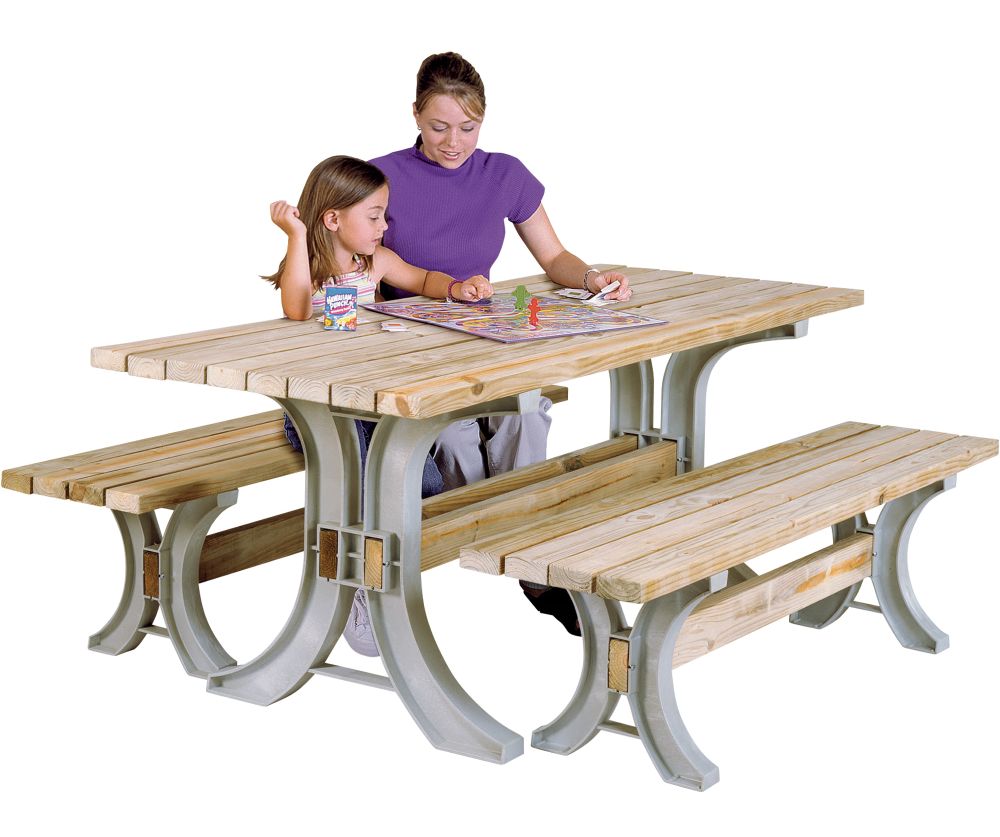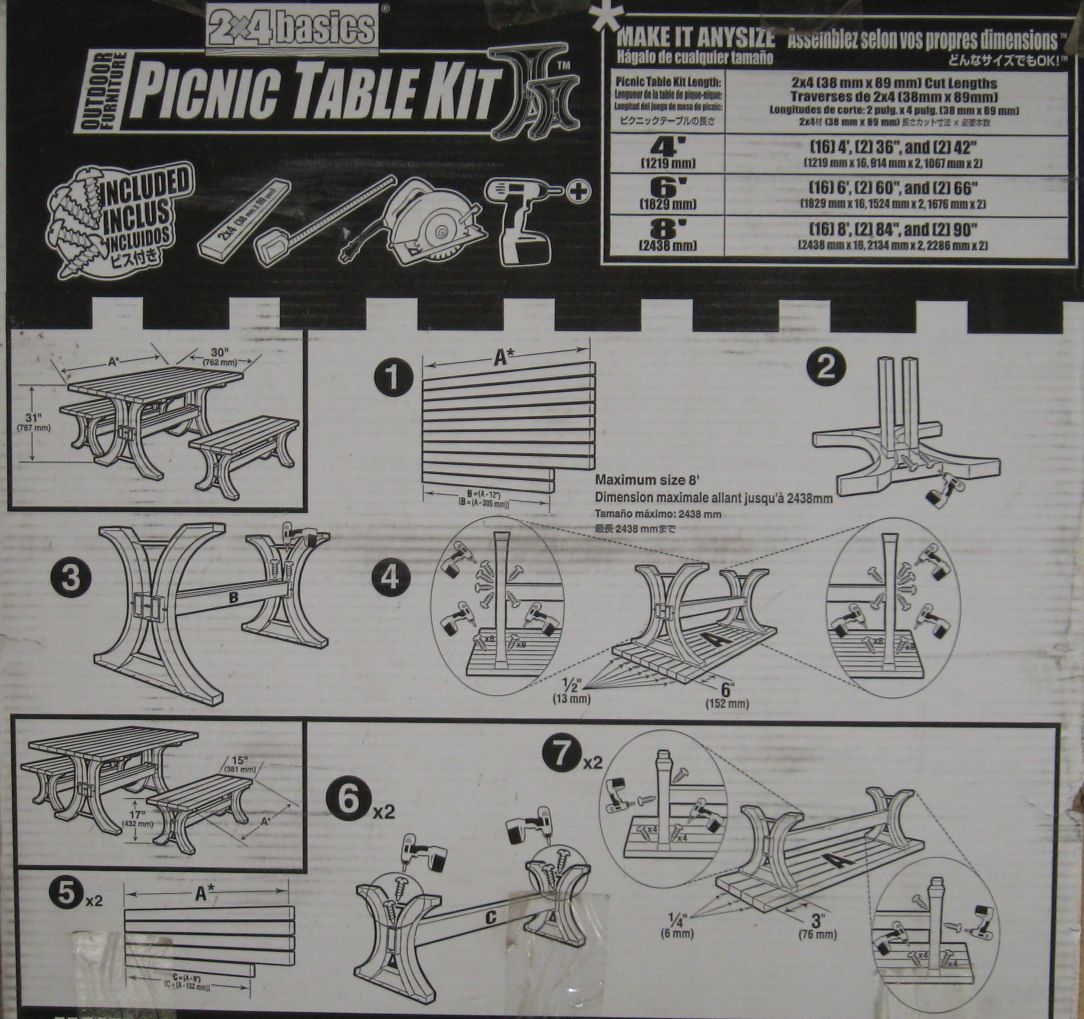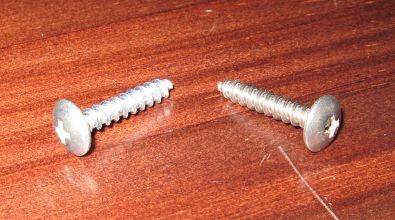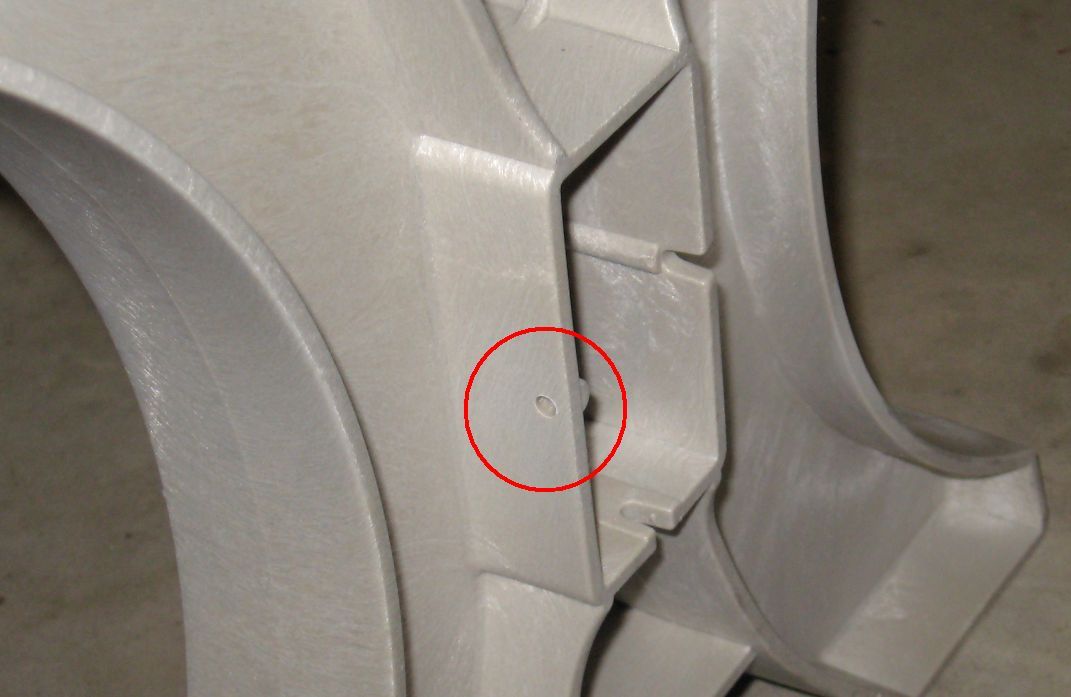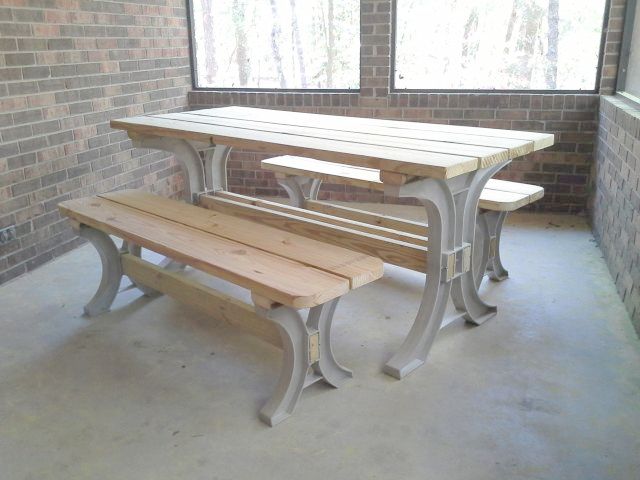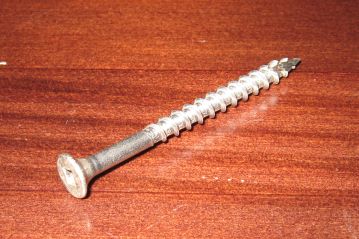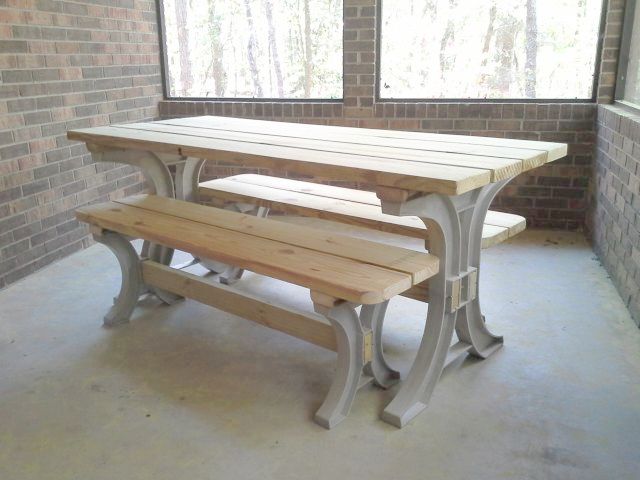
Going with shorter benches also facilitates
making the table in half-foot lengths. For example, if
you want a 6-1/2 foot table, buy 12' boards and cut a 6-1/2
foot piece from each one for use on the top. The
remaining 5-1/2 foot piece is used for the benches.
Since the same number of boards are used in the top and the
benches, there won't be any waste.
